Wireless Configuration for Billion 7300GRA, 7401VGP-R3 and 7404-X Routers
This guide is suitable for the following Billion router models:
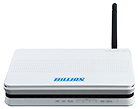 |
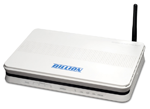 |
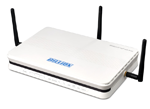 |
|
|
|
What we'll cover:
- Logging into your router
- Turning your router's wireless settings on (or off)
- Securing your wireless network so only people you allow may connect
- Setting up Wireless N (7404VNP-X and 7404VNO-X only)
Not what you're looking for? Try the ADSL Setup Guide or the NodePhone Setup Guide.
Configuring your Wireless network
Step 1
- Make sure that your computer is connected to your router with an Ethernet cable.
- Open your preferred web browser, for example: Internet Explorer, Google Chrome, or Mozilla Firefox.
- Enter the following number into the address bar and then hit Enter on your keyboard:
- 192.168.1.254 (this is called an IP Address).
 |
| Figure 1: Entering the IP address to access the router |
Step 2
- The modem Log In page will open. You will be prompted for a username and password.
| Username: | admin |
|---|---|
| Password: | admin |
| This is the router's default username and password. We recommend that you change the password for security reasons. |
|
- Click OK to log in to the router.
Step 3
- Click WLAN from the menu to the left of the screen. If you do not see WLAN, click Basic (at the top left of the screen) to change the menu options.
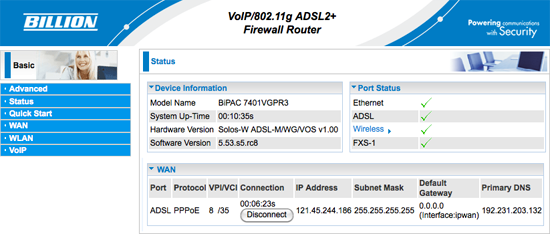 |
| Figure 2: A Billion router status page |
Step 4
- The Wireless Configuration page will be displayed.
- Ensure that WLAN Service is set to Enable.
- Create a name for your wireless network and enter this into the field labelled ESSID.
Creating a network name (SSID)
Your network name is used to identify your wireless network. This is particularly useful if there are other wireless networks nearby.
Because your network name will be visible outside of your home or office, the name should be recognisable but should not use any personal or service details.
- Bad Network Names:
BloggsFamily, JoeBloggs, 123JamesStreet, Internode, default, your Internode username, your router's name/brand. - Good Network Names:
MyNetwork, HomeWireless, Homestead, Cookie Monster (be creative!)
Step 5
- Set the Security Mode to WPA2-PSK (or WPA2). Further menu options will appear underneath.
- Create a password that will be used to access your wireless network. This needs to be entered next to WPA Shared Key.
Creating a Pre-shared Key (Wireless Password)
A Pre-shared key prevents people you don't know from accessing your wireless network. When you connect your computers to your wireless network, you will be asked for the pre-shared key. If someone tries to connect without the pre-shared key, they will be unable to connect.
Your pre-shared key:
- must have a minimum of 8 alphanumeric characters (the longer the better)
- is case sensitive
- should never be the same as your Internode password - or any password you currently use!
We recommend you create a complex password for your pre-shared key.
- Once you have entered a password (pre-shared key), click Apply.
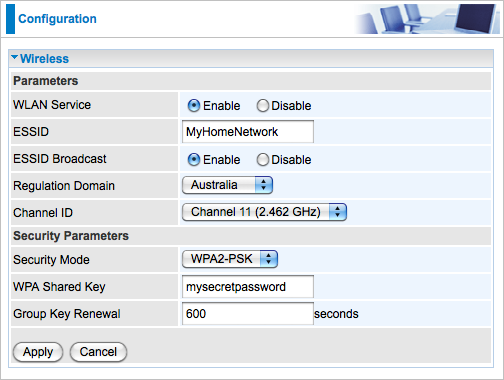 |
| Figure 3: The Billion Wireless Configuration Page |
Step 6
- To save your wireless network settings, click Save Config at the bottom right of the screen.
- The modem will display the Save Config to FLASH screen. Click Apply to save your settings.
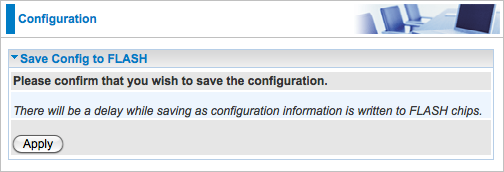 |
| Figure 4: Saving your settings to the Billion router |
Congratulations! You have successfully configured the wireless settings on your Billion router.
To connect your computer to the network, please refer to the following guides:
- Connecting a Windows computer to a wireless network
- Connecting a Macintosh computer to a wireless network
Configuring Wireless-N (7404VNP-X and 7404VNO-X only)
The Billion 7404VNP-X and 7404VNO-X routers support the Wireless-N standard. Wireless-N offers significantly greater local network bandwidth - up to 108 Mbps.
Note that the local network speed is faster than broadband ADSL speeds. Increasing your local network speeds will not necessarily increase broadband performance. For more information, see our Guide to Optimising ADSL2+.
Step 1
- Log in to the router and configure your wireless network as per the steps above.
- Click Advanced in the menu to the left of the screen to switch to the Advanced Menu. Note that the text next to the blonde woman will change to "Advanced".
- Click Configuration, and further menu options will appear underneath.
- Click LAN. Again, further menu options will appear.
- Click Wireless to go to the Wireless configuration screen.
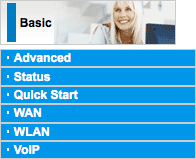 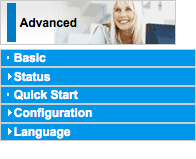 |
| Figure 5: The Basic and Advanced Billion router menus. |
Step 2
- Check that the Mode is set to 802.11b + g + n. This will allow connections from new devices that support Wireless-N, while still supporting older Wireless B and G equipment.
- If you are sure that all of your devices are Wireless-N compatible, setting the Mode as 802.11n only will ensure the fastest and most stable connection.
- Once you have checked your settings, click Save and then Save Config at the bottom right of the screen.
- Click Apply again to save the settings.
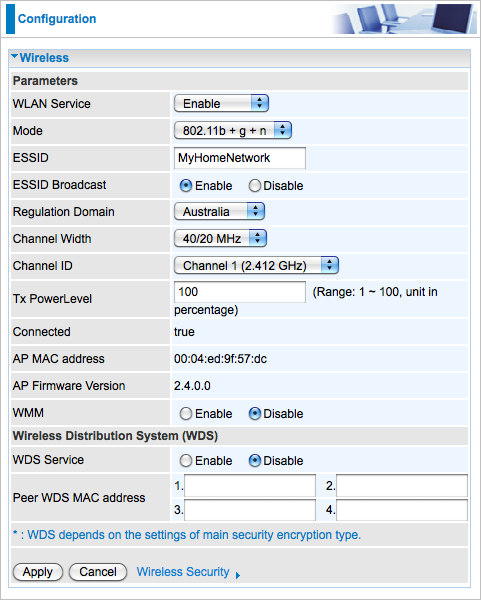 |
| Figure 6: The Advanced Wireless settings in the Billion 7404VNP-X. |
Further Assistance
If you are looking to set up your Internet or NodePhone service, please refer to the following setup guides:
- ADSL Configuration for Billion 7300(G)RA, 7401VGP-R3 and 7404-X Routers
- NodePhone Configuration for Billion 7300(G)RA, 7401VGP-R3 and 7404-X Routers
If you are having trouble setting up your router or would like to clarify some of the steps, please contact our Support Team.

